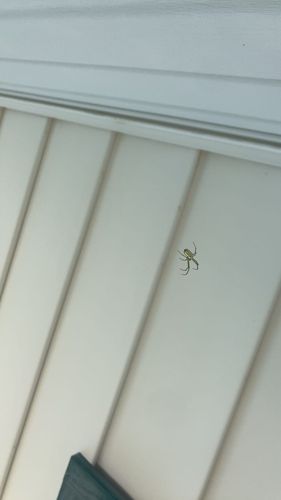Orchard Orbweaver
Scientific Name: Leucauge venusta
Order & Family: Araneae, Tetragnathidae
Size: Females typically 5-7 mm (0.2-0.28 inches); Males are smaller, around 3-4 mm (0.12-0.16 inches).

Natural Habitat
Gardens, orchards, woodlands, and other areas with vegetation. Often found in webs suspended between plants or structures.
Diet & Feeding
Feeds on small flying insects caught in its orb web, such as flies, mosquitoes, and gnats.
Behavior Patterns
Constructs intricate, horizontal or slightly inclined orb webs. They often rest in the center of their web with their legs spread out, waiting for prey. The distinctive bright coloration (often iridescent green, silver, yellow, and black) may serve as a warning to predators or to attract prey. They are generally active during the day.
Risks & Benefits
Benefits: Helps control populations of small flying insects, making them beneficial in gardens and agricultural settings. Risks: Generally harmless to humans. Their venom is not considered medically significant, and bites are rare and typically only occur if the spider feels threatened. Any bite would likely result in mild, localized pain and irritation, similar to a bee sting.
Identified on: 9/21/2025